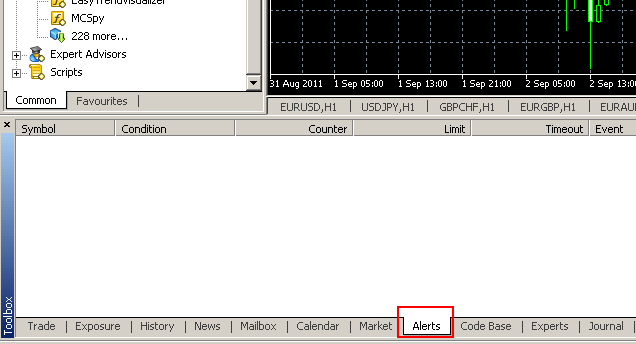
There are two different ways to get price alerts in your MetaTrader Forex trading platform. The first one is to use the
Both MT4 and MT5 support an alert system that allows setting the price alerts directly from within the platform. The MT4 version is slightly inferior due to lack of the Volume alerts and the alerts based on the Last price (such alerts don’t differentiate between Bid and Ask prices). All screenshots in this tutorial will be from MetaTrader 5 interface — the differences with MetaTrader 4 are minimal and aren’t related to the way the alerts are placed.
1. Switch to Alerts tab of the Toolbox window of the platform. If you have no current alerts set up, the tab will be empty.

2.
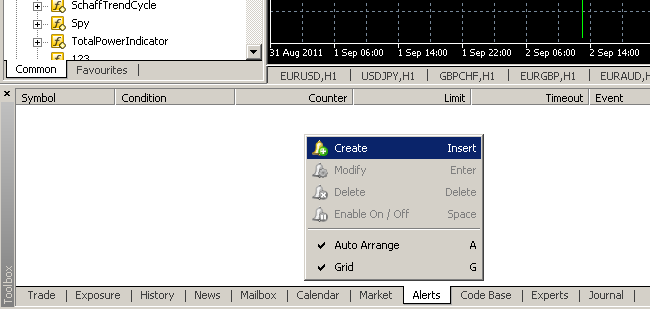
3. Alert Editor will pop up.
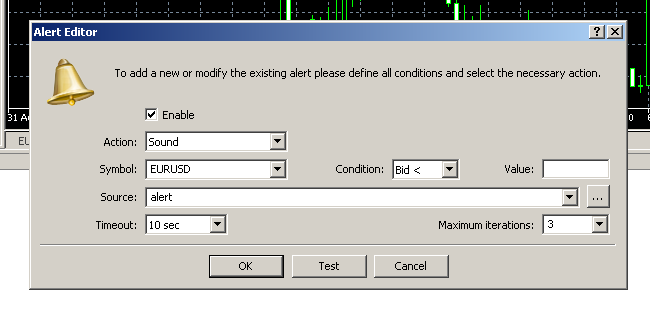
4. Enable checkbox can be unchecked to disable the alert temporarily without deleting it.
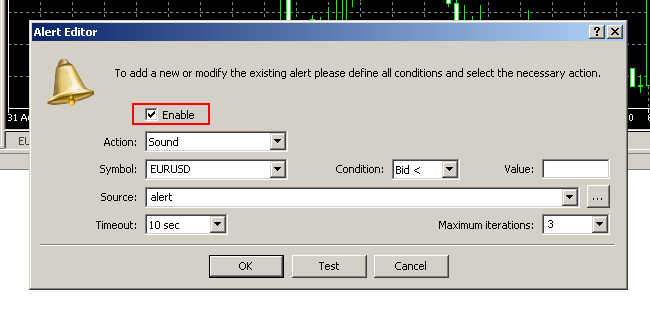
5. Choose Action to be triggered by the alert. There are 3 choices available: Sound (default) — will play a sound file of your choice, File — will execute a program of your choice, Mail — will send an
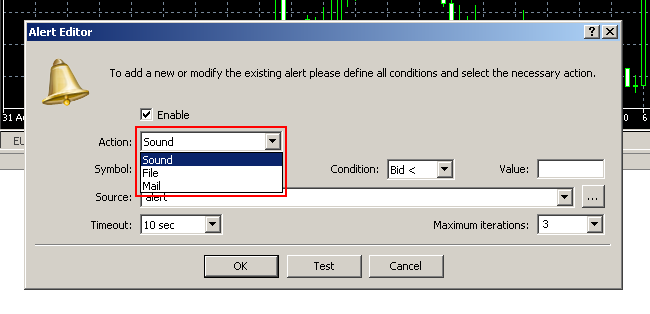
6. Now you can choose Symbol for the alert, Condition and Value. There are 9 conditions available: Bid >, Bid, Ask < — are 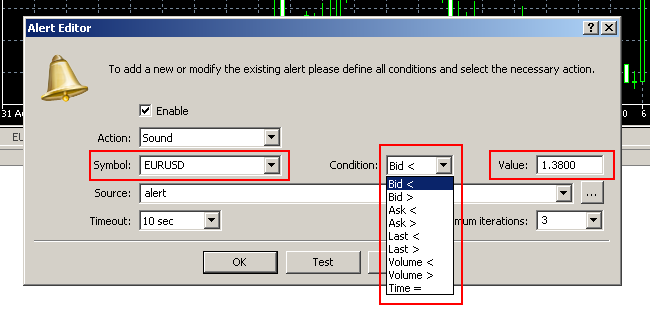
7. Choose source. For Sound alert, it’s a file containing a sound (can be WAV, MP3 or WMA). For File alert, it’s the exact executable file to be launched. For Mail alert, a special
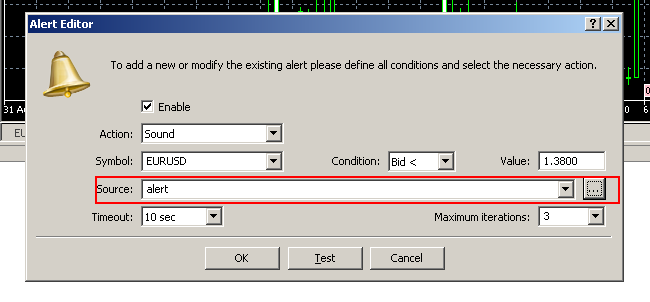
8. Set Timeout for your alert — the period of time to wait before alert action iterations will be performed. For example, if you set it to 10 seconds, you will hear the alert sound every 10 seconds.
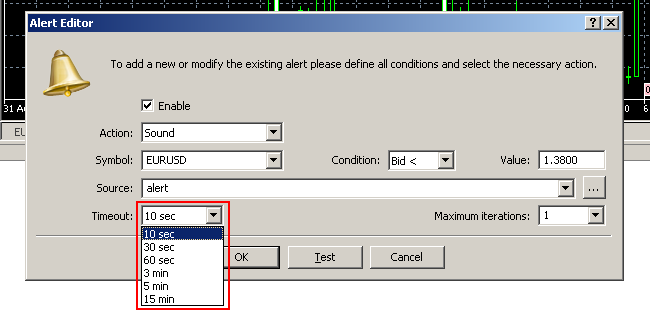
9. Set the Maximum iterations number — this value determines how many times the alert action will be performed. For example, if you set it to 3, you will hear the alert sound only 3 times.
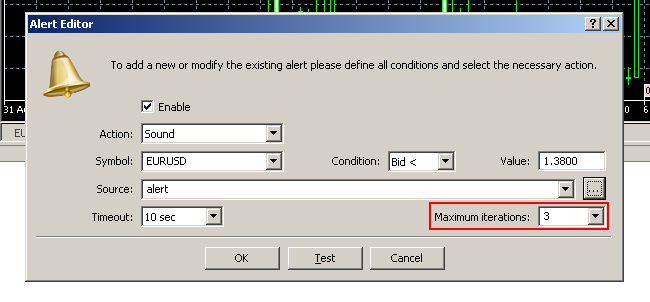
10. You can test the alert before saving it. Clicking the Test button will trigger your chosen alert action.
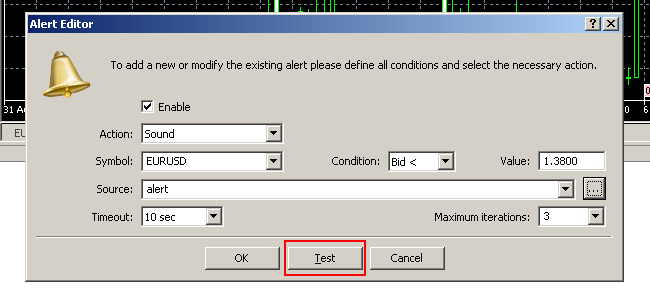
11. To save your alert, just click the OK button.
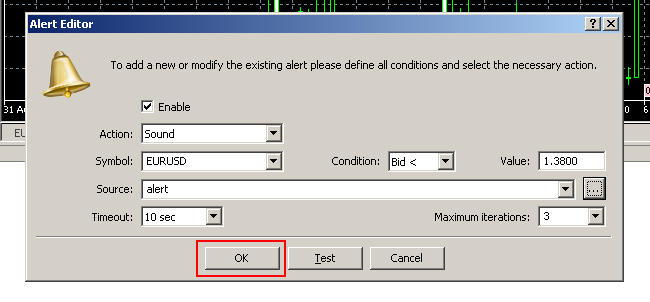
12. The created alert will be displayed in the Alert tab. Untriggered alerts are displayed in normal font (2nd and 4th in the list on the picture); triggered alerts are displayed in bold (1st and 3rd in the example list). Triggered alert with a crossed bell icon (1st in the list) has reached the limit of its iterations and will no longer work. Triggered alert with a swinging bell icon (3rd in the list) has one or more iterations left and will continue to work.
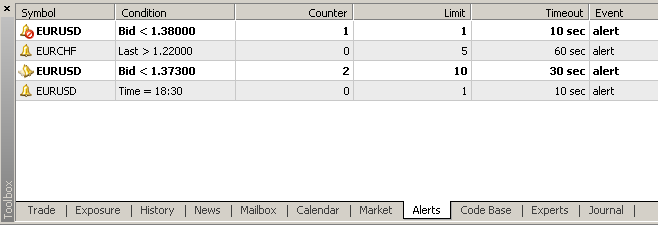
Some additional tips for using the price alerts in MetaTrader platform:
If you liked the tutorial or if you don’t understand a part of it and still have some questions about using the price alerts in MetaTrader platform, feel free to leave your replies and ask your questions via the commentary form below.